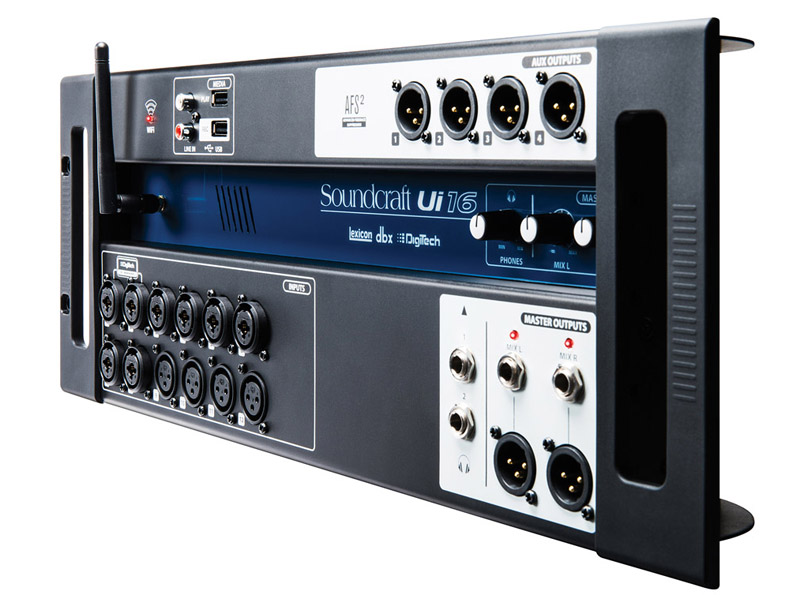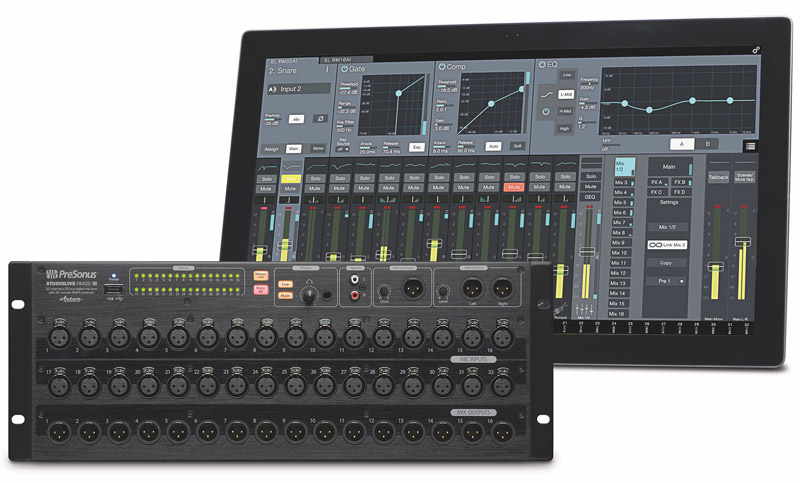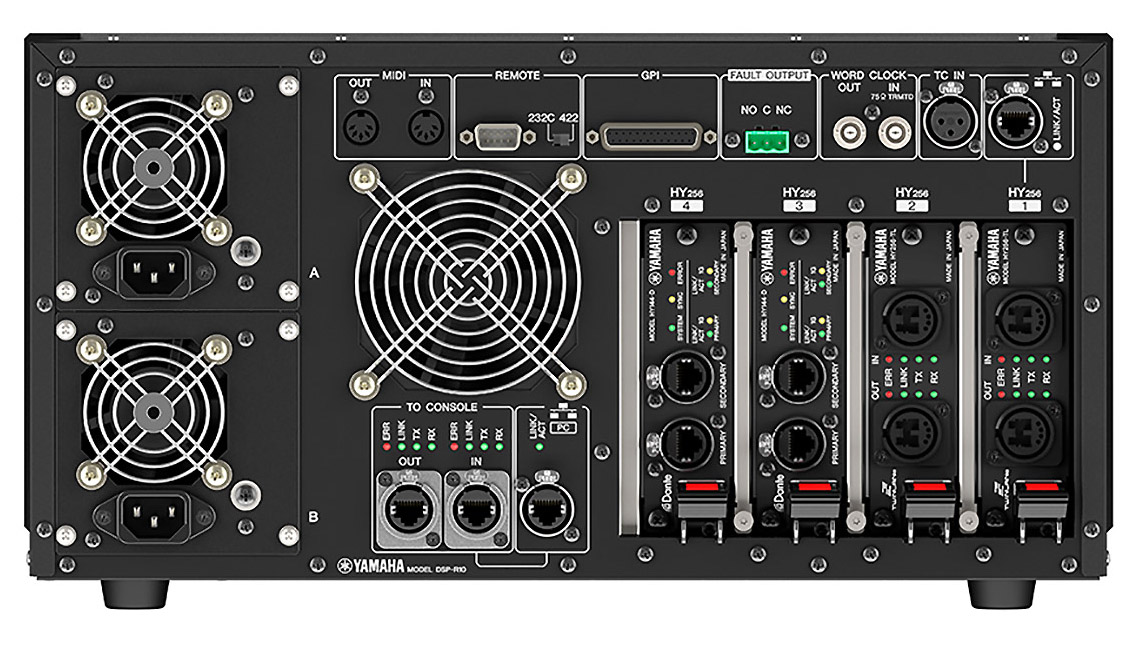When shopping to add a new console to my company’s inventory, I look at three primary aspects: reliability, sonic quality, and routing options.
Most consoles from the major manufacturers are reliable and sound great, so the choice often comes down to the inputs, outputs, networking and overall routing capabilities.
There needs to be the required number of inputs necessary to handle most/all of the gigs my company works, and further, we want extensive routing options and outputs to both send feeds everywhere and patch things easily.
The corporate events that are our specialty require a multitude of output sends, including feeds for recording, video world, podium and backstage monitors, dressing rooms and show intercoms, overflow and/or breakout rooms, and of course, feeds to the main PA, delay zones, front fills and possibly tie-ins to the house and lobby loudspeakers.
On smaller budgeted shows, the front of house console might also have to supply monitor and stage fill mixes for the entertainers onstage. Live remotes add a few more sends that could include splitting off certain inputs or crafting sub mixes to send to a broadcast truck. It’s surprising that even small gigs can have a lot of routing requirements, including stage and in-ear monitors, aux fed subs, a feed to a videographer, and again, the main system.
And it’s just not outputs that need to go everywhere. Inputs can be located on stage, off stage, backstage, in another room, in a remote truck, or right at the console. The ability to patch inputs has taken on increasing importance, even when a gig doesn’t appear to be all that complicated at first glance. Another concern can be a console’s networking ability, and how it can connect to various digital network protocols as well as analog systems.
My days of running large, heavy analog multi-core splitter snakes are coming to an end, replaced by networked audio over coax, fiber or Cat cables. Even many smaller consoles feature the increasing capability to interface with a variety of network protocols like Dante, MADI and/or the manufacturers’ own protocol. Networking lets us to locate stage boxes anywhere without having to run obtrusive copper snakes, and it also allows the console to interface with additional consoles and recording devices.
Remote live access is another item that has been added to many smaller consoles/mixers. Being able to walk around a venue and mix the show on an iPad or stand onstage next to a performer during sound check and dial in their wedges has made my job easier. Another benefit of wirelessly accessing the console lets us place it at the stage and not even run a snake at all.
An increasing number of models also allow wireless access via tablet or phone so that performers can adjust their own stage mixes. This can save a ton of money for a band or church that can’t afford a stand-alone personal monitoring system, and it can also save engineers and techs a lot of time and hassle. With so many new models and technologies hitting the market recently, let’s take a look connectivity capabilities.
Compact rack-mount consoles/mixers are becoming quite popular and Allen & Heath unveiled a new one at last month’s NAMM show. Qu-Pac can be used on a tabletop or mounted in a rack, with full control of the mixer from the front-mounted touch screen as well as with wireless iPad and iPhone remotes.
The 16 onboard XLR mic and TRS line inputs can be expanded up to 38 inputs via the Allen & Heath dSNAKE network, and the unit also offers a 32 × 32 USB audio interface, 2 stereo TRS input channels, 12 mix buses and AES output. A cool feature is the ducking circuit, which can come in handy for making announcements over music or allowing one person’s mic to override others at a meeting.
Also new at NAMM was the Soundcraft Ui Series of compact mixers that can be placed anywhere, like a stage box. (The larger unit can also be rack-mounted.)
Both models have built-in Wi-Fi and the ability to be controlled by any connected device via a standard web browser, including iOS, Android, Windows, Mac OS, and Linux devices.
The smaller Ui 12 has 4 XLR inputs, 4 XLR/TRS combo inputs, dual 1/4-inch line inputs, stereo RCA line inputs, 2 XLR aux outputs and a pair of main XLR and 1/4-inch outputs. The larger Ui 16 adds 8 XLR/TRS combo jacks to 4 XLR inputs and 4 aux XLR outputs.
Staying in the rack-mount genre, PreSonus recently added a couple of new compact models to its StudioLive mixer lineup. The RM16AI and the RM32AI offer the same features, with the only differences being the number of channel inputs and mix outputs. Both are operated using UC Surface control software for Mac, Windows, and iPad. The RM16AI has 16 XLR inputs, 8 XLR aux buses, and 3 XLR main outputs for LCR.
Meanwhile the RM32AI offers 32 XLR inputs, 16 XLR buses and 3 XLR main outputs. Both also provide stereo RCA inputs and an option card slot.
A S/PDIF digital output option card, as well as FireWire S800 and Ethernet cards, are available now, with Thunderbolt, Dante and AVB cards announced. Using the same one-click recording software as the rest of the StudioLive line, these new units foster easy virtual sound checks.
Let’s shift gears to larger models. Yamaha Commercial Audio just introduced a new flagship console, the RIVAGE PM10. The control surface offers 8 analog inputs and outputs, 4 AES inputs and outputs, and a pair of MY option card slots.
The DSP-R10 engine provides an additional 2 MY slots along with 4 HY slots (TWINLANe and Dante). The main connectivity is via RPio622 stage boxes, which can provide up to 96 mic preamps per rack along with 2 HY slots.
I’m also anxious to hear the newly-developed RY16-ML-SILK hybrid mic preamp with digital modeling based on Rupert Neve Designs transformer circuitry, with users able to choose between a transparent audio path or one enhanced by the Silk processing, which provides a bit of color and character to each input.



















